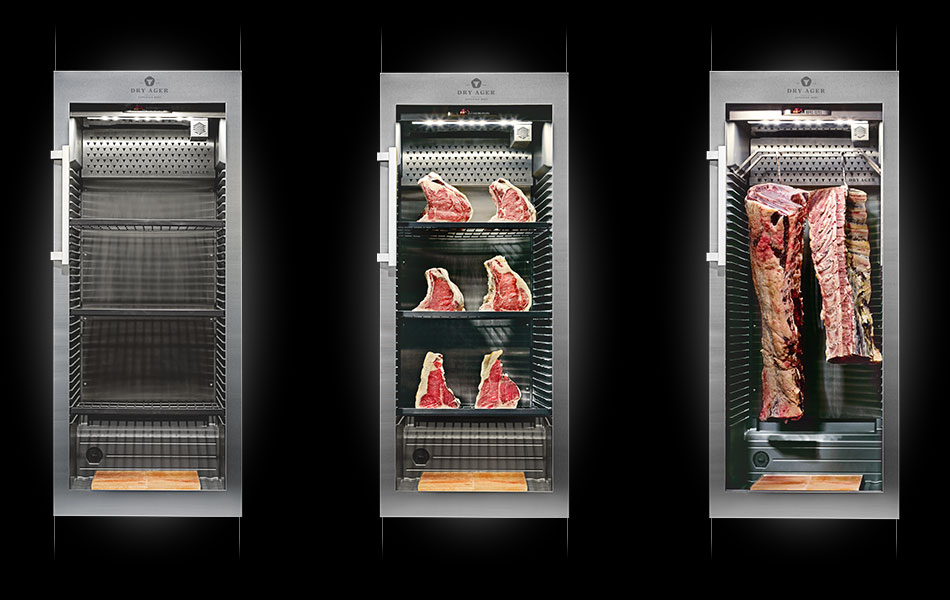THIS IS HOW
DRY AGING IN THE
DRY AGING FRIDGE WORKS
01
PREPARATION
Prepare the back and large pieces on the S-hook or the handle. Parts, such as ribs, can also be stored on slide-in shelves. Very small cuts should be avoided, because there wouldn’t be much meat left when the crust is cut off. Now patience is required. 3 – 6 weeks for the beef to mature. The reward when waiting is the wonderful smell of ham, yeast and a touch of musk in the dry aging fridge.
02
BUTCHERING
Whilst dry aging meat at home one needs some space in the follow-up. Before the meat is portioned, the crust is cut off. It is now as dark as black sausage and hard. Underneath this is the red-brown muscle meat. All steak cuts can be cut off the bone: Rump steak, Entrecôte, Porterhouse, T-Bone, Rib Eye, etc. If you have never butchered meat before, you should be smart. In addition, a good meat knife and, if necessary, a cleaver / splitter and a bone saw are needed.
03
POST-PROCESSING
If you want to dry age meat at home, you need some space for post-processing. Before portioning the meat, cut off the crust. It is now as dark as black sausage and hard. Underneath is the reddish-brown muscle flesh. All steak cuts can be cut from the back strand: Rumpsteak, entrecôte, porterhouse, T-bone, rib eye etc. If you’ve never cut meat before, you should make up your mind beforehand. You will also need a good butcher’s knife and, if necessary, a hatchet/splitter and a bone saw.
04
PREPARATION
Prepare the dry aged meat to room temperature. A marinade is not required. Good salt and some sharpness are enough. The best way to taste the meat is from the grill. But it does not always have to be steak. Dry aged burgers, fillet or roulades promise maximum taste. With these super conditions the DryAger® is not just for meat – ideal for sausages, wine and cheese. This means you can not only mature your meat at home, but also produce ham or salami, the controlled conditions in the dry aging fridge are ideal. Even cheese and wine keep well and improve on taste.







